If a person is a naturalist and a fan of keeping pets, it happens that periods of enthusiasm for different groups of animals replace each other throughout life as waves. A few years ago I read the article “Keeping Microgecko persicus euphorbiacola” by Philip Patton on this site. After that, owning these wonderful animals became my dream (not the only terrarium dream, but one of the main ones).
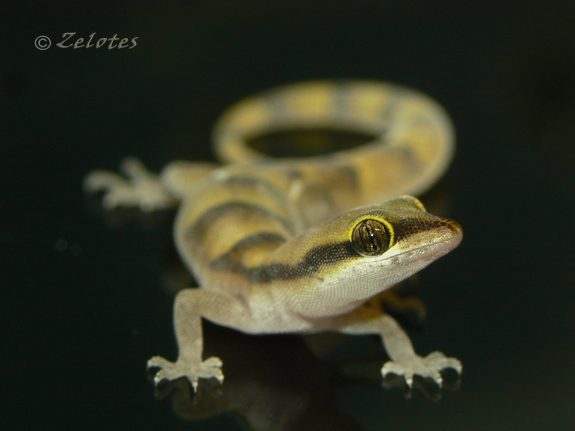
I collected the information about them on the Internet, collected photos and found scientific articles about this species and this genus. Unfortunately, the D. Boone website has not been available for some time, and no one has responded to my ad to find this species. Then I looked at the species distribution, and my dream became to see this lizard in nature. I organized 3 trips to possible habitats. Since I thought that all the early photographs of Microgecko belonged exactly to this subspecies, my trips were only to the places where this subspecies was distributed (the lower reaches of the Indus, the Indus floodplain and the surrounding regions such as the That desert, which are in India and Pakistan). It was an interesting life experience, but unsuccessful.
Microgecko Habitat
However, after that I had some luck. I met an Azerbaijani who worked abroad in the construction business in the place where these lizards live. This man had an interest in nature. He saw this species in a building stone quarry. According to him, these lizards appeared a couple of times during the development of the quarry. I asked him to document sitings. It turned out that these lizards appear when large balls of milkweed bushes (Euphorbia caducifolia) are broken when mining stones. The geckos are usually found in pairs, one pair to a bush. It looks like most of the milkweed balls are empty and the Microgecko lives only in some rare places, but in one good place there are usually pairs in a few of the bushes. The original description of the subspecies also says that lizards were found in this kind of plant, and the name of the milkweed gave the name to the lizard subspecies (Euphorbia/euphorbiacola) (Minton et all. 1970).

In another article on the study of Thar desert lizards (in Western India) (Agarwal, 2009), it is said that they were not found despite careful searching in dry milkweed and under stones. But they had rarely been found on the ground in the dark during the hot season. It remains a mystery where these lizards can hide all the time. However, these researchers did not test live milkweed bushes.
From all this information, I concluded that these lizards live in milkweed bushes and are rarely found in other shelters (but sometimes it happens – they must go from bush to bush from time to time!).
You can imagine what conditions may be in this bush. At the base of the bush, old branches and leaves accumulate. Living branches raise water from the soil and hold the humidity. The bush protects its inhabitants from the sun, rain, wind and predators, and keeps the temperature steady. It provides food and shelter for insects. Sometimes there are many burrows of gerbils under the bush. Echis and scorpions also live in it. Home Sweet Home!
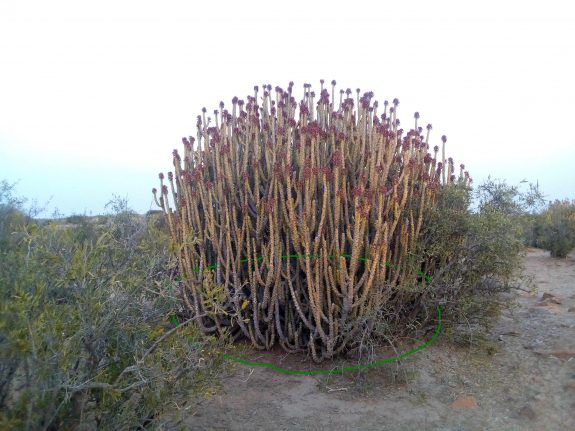
First Attempts with Microgecko
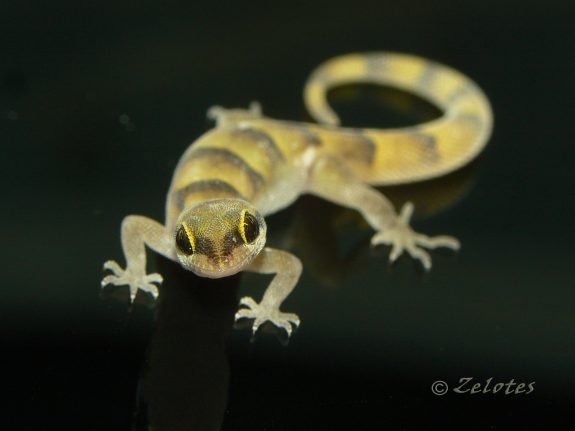
When I finally got these Microgecko two years ago from the territory of lower reaches of the Indus River, I was extremely excited! I like small geckos, and I already had some Tropiocolotes. This is a closely related species and are also very nice to keep. But my new Microgecko compared to Tropiocolotes were like elves compared to humans! They looked like graceful figurines carved from translucent stone. But they were alive! Unfortunately, my first experience was not very successful. I kept them the same way as Tropiocolotes and within six months I lost all the males (they turned out to be more fragile than the females). There were attempts at breeding, but mostly with bad outcomes.
At the same time, I found an excellent hobby article [ed.note: this article is in German] about keeping the Microgecko Tropiocolotes, where the author pointed out that about 10 years ago, geckos labelled as M. pesricus euphorbiacola were actually imported M. helenae. That meant that all the early photos, posts, and possibly Philip Patton’s article on this site, may actually be about M. helenae (or other subspecies of M. persicus like bakhtiari). It seemed to be the truth: I was always a little puzzled by the fact that the color of my geckos was not really the same as the color of other similarly labelled geckos that were in captivity. After reading additional scientific articles about these species, I was not entirely sure of the correctness of the identification of any captive Microgecko. Although I could not check other Microgecko that were in the hobby earlier, I could check mine. After checking the morphology and coloration of males with the identification key, I realized that my lizards were real Microgecko persicus euphorbiacola. Wow! It looks like a subspecies in captivity the first time!

The difference between the two gecko species is confirmed in another way. About 10 years ago, Microgeckos (possibly M. helenae) were imported into some countries. In scientific articles you can see that M. helenae and other Microgecko (Topiocolotes) usually were found on the ground or under the stones. But is it possible to import large quantities of dwarf geckos living in milkweed bushes? I think no. You can imagine how hard it can be to destroy bushes that are two to four meters in diameter and search for lizards in them. The bush has excellent protection: spines, caustic juice, heavy branches. It can easily kill fragile little geckos and harm people. Only rarely can geckos be found in casual shelters or walking on the ground during the night.
After spending a lot of time and resources, I got another few pairs. By this period, I had more information to think about. I knew that most keepers failed with these geckos. It was better to get away from stereotypes. The milkweed bush idea became the basis for tests of different types of habitats. And now, in my humble opinion, I think I have found some answers. In the last breeding season, my pairs produced eggs, and I did not lose a single male.
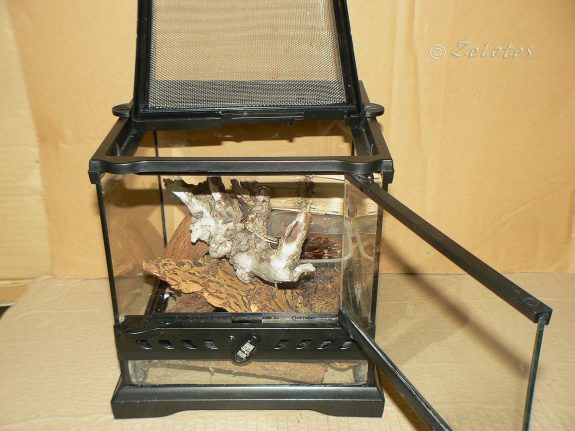
Successfully Caring for M. persicus euphorbiacola
Large terrariums are recommendated for other M. persicus subspecies (Torki, F. 2010). But in my experience, a terrarium with a volume of 5 liters can be ok for a breeding pair of these geckos. The cube is the best form. The small Exoterra terarum is perfect (20x20x20 cm/8″x8″x8″). The higher nano-terrarium and big cube (20x20x30 cm and 30x30x30 cm) also work well. Ventilation from above, as provided with the Exoterra terrarium, is also important. The main part of the terrarium should be dry and the terrarium should have a separate place with loose moist substrate (a closed shelter, such as a little plastic container, about 250-350 ml in size). I cut off half of the top cover of this container and put a mix of sand and coconut substrate into it (about halfway up). The geckos enter the moist box from above. This wet container should be easy to find and easily accessible for animals (these geckos do not walk on smooth walls but can climb up and down the decorations). The moist substrate is obligatory and must be kept moist. I also put a curved piece of bark there but not on the entire surface of the substrate. The bottom of the terrarium can be bare (it’s easier to look for eggs and overgrown insects) or with dry substrate.
Background items inside the terrarium should be complex and three-dimensional: fake living and dead brush. Enough pieces of cork bark to provide many shelters, or a bunch of of stems of large dry plants. Stones are a bad choice for decorations, as they are too heavy; eggs and geckos can be damaged. In any case – provide many shelters at different levels! But this does not mean that you will not see the geckos – they are not very well hidden, especially in the evening. The geckos use the entire area of the enclosure and its contents. Males usually go upward for singing. They spend all their time in or on these tubes and bark; they rarely just sit at the bottom.
Food should be small –pinhead cricket or fruit fly size– and there should be not too many fed at once. Better to feed often (2-3 times a week in summer, 1-2 times in winter) in small portions. Feeders should always be sprinkled with calcium.
A temperature of about 20-35 degrees Celsius is ok (depending on the season). It seems that these lizards do not require a special place to warm up. I use a long UV 10.0 lamp over a group of small terrariums, which is very convenient.
Drinking water: you can use it or not – it seems not to matter (the geckos receive moisture from the substrate and from food). Spraying 1-2 times a week is enough (in winter 2-3 times, because the air is dry).
The appearance of these lizards is wonderful. Particular attention is drawn to the impressive eyes, framed on top by small “eyelashes”. The color of individuals varies – the width of the transverse stripes and precise shades are different. Often females are pale in color, against the bright yellow color of males. But sometimes the male and female are colored similarly. They are curious and careful. They move smoothly and love to jump. Undoubtedly, jumping is an important way of moving along the bush branches. Before jumping, they can estimate the distance by shaking their heads. Their refined beauty in combination with the grace of movements gives rise to a sense of miracle.

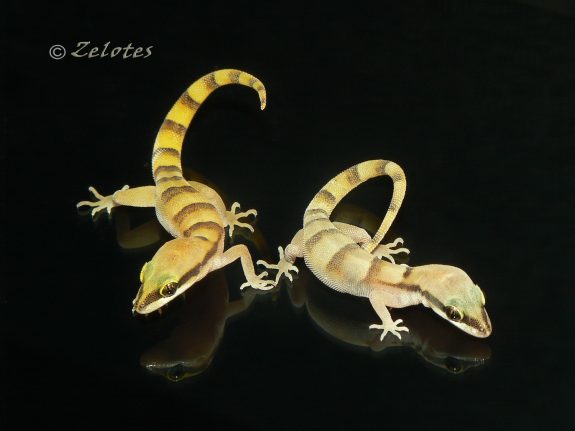
Habits and Behavior
Vocalization is a very characteristic feature of these geckos. Even with an unexpected touch, they can “cry out”. Many species of geckos have vocalization. But I can assume that in Microgecko persicus euphorbiacola this feature has developed especially strongly due to life in the bushes. The milkweed ball perfectly protects the small singing lizard. If the gecko rises higher, the singing will be heard further. And also thick branches in the bush probably can serve as resonators. During the mating season, males sing every evening for 1-2 hours, and sometimes outside this time. There is a basic type of measured singing, a series of clicks, similar to the singing of other Microgecko. This type of singing can last a long time, and most likely serves to mark the territory. In addition, there are several types of more complex trills of males. Different males at different times can sing different trills, and trills of one male can differ at different times. Often males do not finish the trill, and stop it in the middle. It looks like singing of full trills is not easy to do. And it can indicate the health of the male, which is important for females. If the males hear each other, they stimulate each other to sing. A series of “singing” small terrariums creates a feeling of comfort in my home.
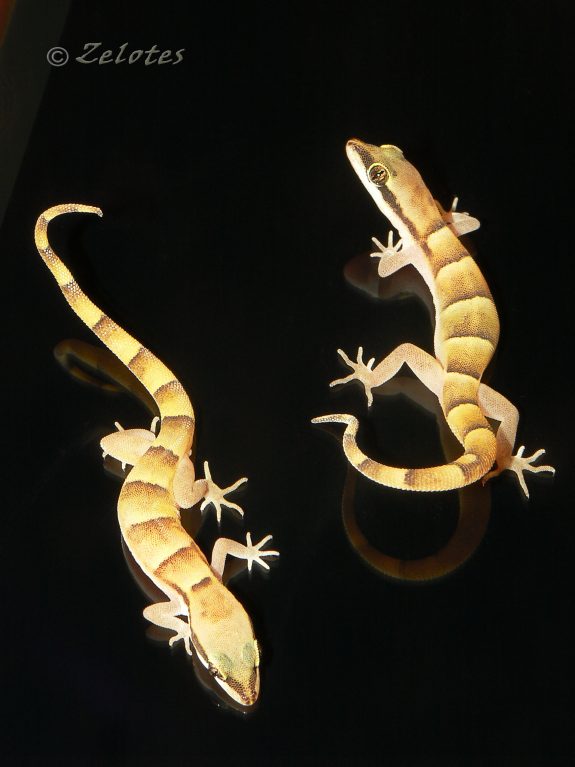

Females produce one big egg about once every three weeks. The eggs are more elongated and more fragile than the eggs of the Tropiocolotes. But I still cannot give exact recommendations on the reproduction of these geckos, although I had success this year. Some of my questions still have no answers; research is continuing. Now I do egg incubation tests. Full results will be presented later. I hope my experience will help the keepers to take care of this fantastic species of the Microgecko. And many thanks to Gecko Time for maintaining my interest in geckos and for the opportunity to present this article to the world.



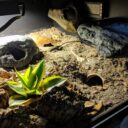
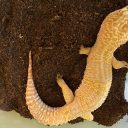
Nice article! I remember buying a group of around 8 animals at my local petshop back in 2001. I was amazed by their appaerance. What an active and interesting behavior. I have searched them later, but never saw them again. They usually laid 2 eggs a time which were sometimes glued to one another. Interesting to read your article with at some points different experiences. Thanks for sharing!
Hi Alexander Sminov ~
Many thanks for sharing your love, images, & care of your Microgecko persicus euphorbiacola in your Gecko Time article published on the 9 September 2019 by Aliza Arzt & Matthew Kammerer.
Your images and presentation are both AMAZING!
I enjoyed your article! The photos were wonderful, and added a lot to a very informative arrticle. Thank you!